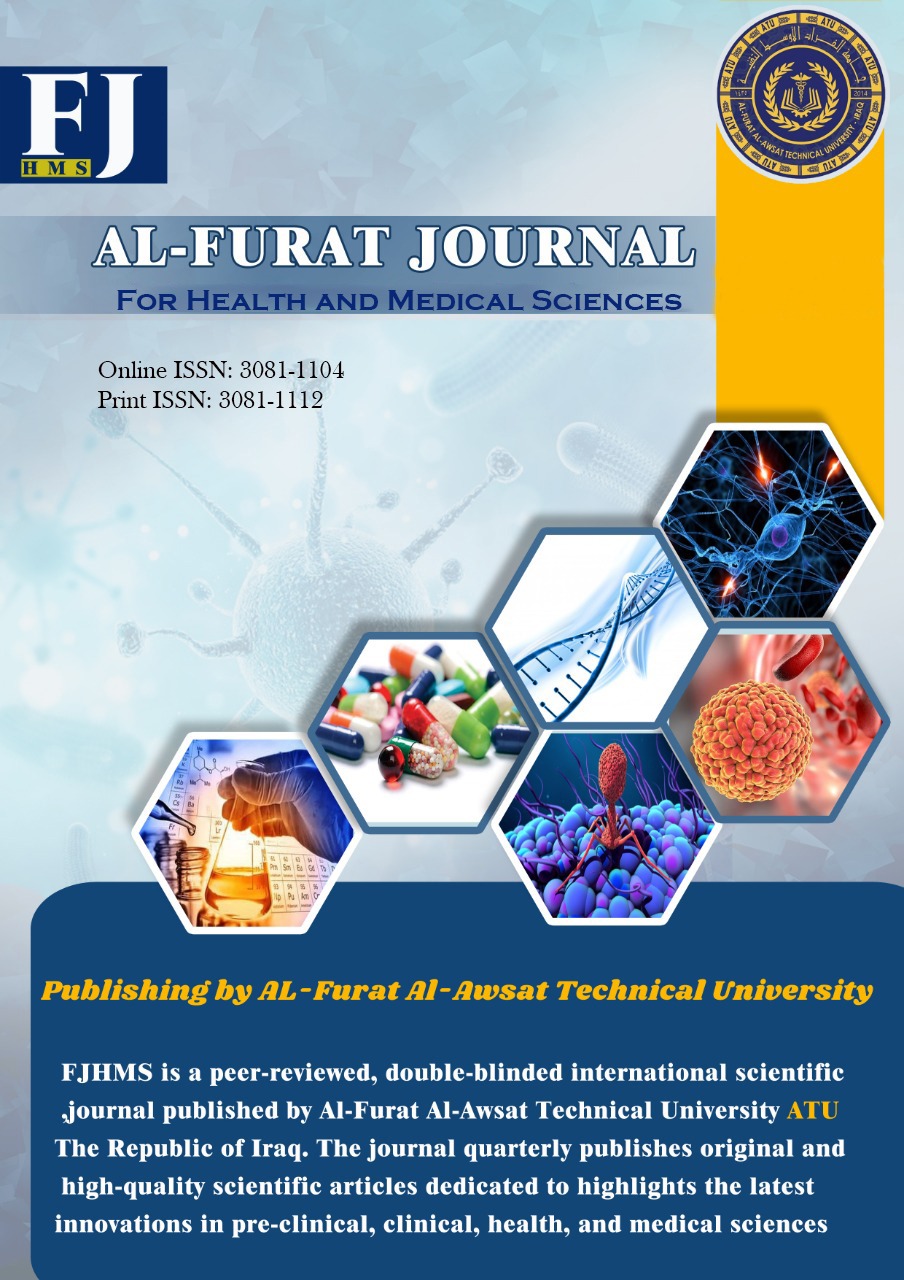Evaluation of Interleukin-10 and Interleukin-4 Levels in Patients Infected with Entamoeba histolytica parasite
DOI:
https://doi.org/10.46649/ea2m7m18Keywords:
Entamoeba histolytica, Amebiasis, Interleukin-10, Interleukin-4Abstract
The research aims to study the IL-10 and IL-4 concentrations present in the serum of Entamoeba histolytica parasite-infected patients. The research seeks to analyze how the changing patterns of cytokine levels affect infection severity and control mechanisms of immune responses during amebiasis cases. This case-control investigation between subjects who had E. histolytica infection (44) and subjects without infection (44). Blood was drawn for IL-10 and IL-4 measurements culminated in ELISA-based performed assessments on both cytokines. The research employed independent t-tests and regression analysis to evaluate cytokine level variations between infected and healthy subjects and discover the effects these proteins have on disease intensity. The study results demonstrated that IL-4 levels measured 291.93 pg/mL as an average among patient groups whereas control participants exhibited mean IL-4 levels at 88.96 pg/mL (p=0.001). The tested patient group exhibited higher IL-10 levels (mean: 2148.22 pg/mL) than controls (mean: 521.89 pg/mL) but the difference between these values lacked statistical significance (p=0.110). Analysis through regression models revealed IL-4 had a robust predictive power for immune responses to infections but IL-10 showed more ambiguous predictive ability. The study shows that IL-4 acts as a critical factor to develop a Th2 immune reaction which enables E. histolytica to evade immune system defenses in patients. Among the detected elevated IL-10 levels researchers did not find statistical significance but they play an essential role in regulating immune response. The study increases comprehension of parasite-host immune process relationships to provide knowledge for upcoming diagnostic and therapeutic approaches to amebiasis.
Downloads
Published
Issue
Section
License
The Corresponding Author, with the consent of all coauthors, hereby transfers to the FJHMS the copyright ownership in referenced Article, including all versions in any format now known or the hereafter developed. If the Article is not accepted by FJHMS or withdrawn prior to acceptance, this transfer will be null and void.
In order for your article to be distributed as widely as possible your grant the FJHMS an exclusive right to:
- Publish, reproduce, distribute, display, and store the Article in all forms, formats, and media known or later developed (including without limitation in print, digital, and electronic form) throughout the world;
- Translate the Article into other languages, create adaptations, summaries or extracts of the Article or other derivative works based on the Article and exercise all of the rights set forth in (a) above in such translations, adaptations, summaries, extracts, and derivative works;
- License others to do any or all of the above
All accepted Articles become the property of FJHMS and may not be published elsewhere without written permission of the FJHMS





